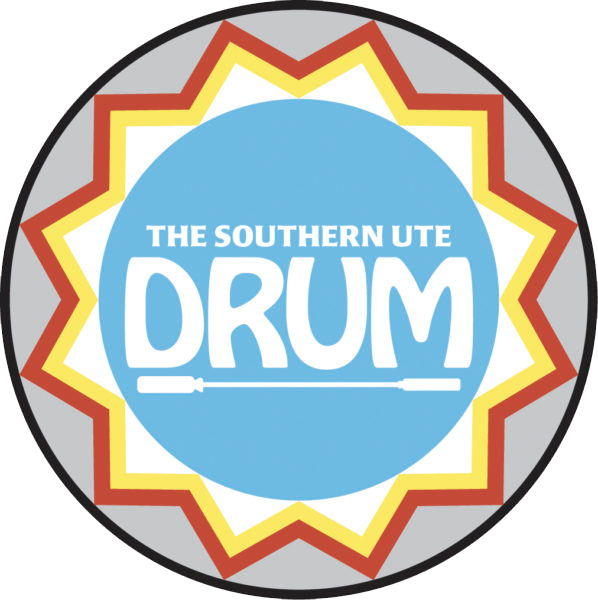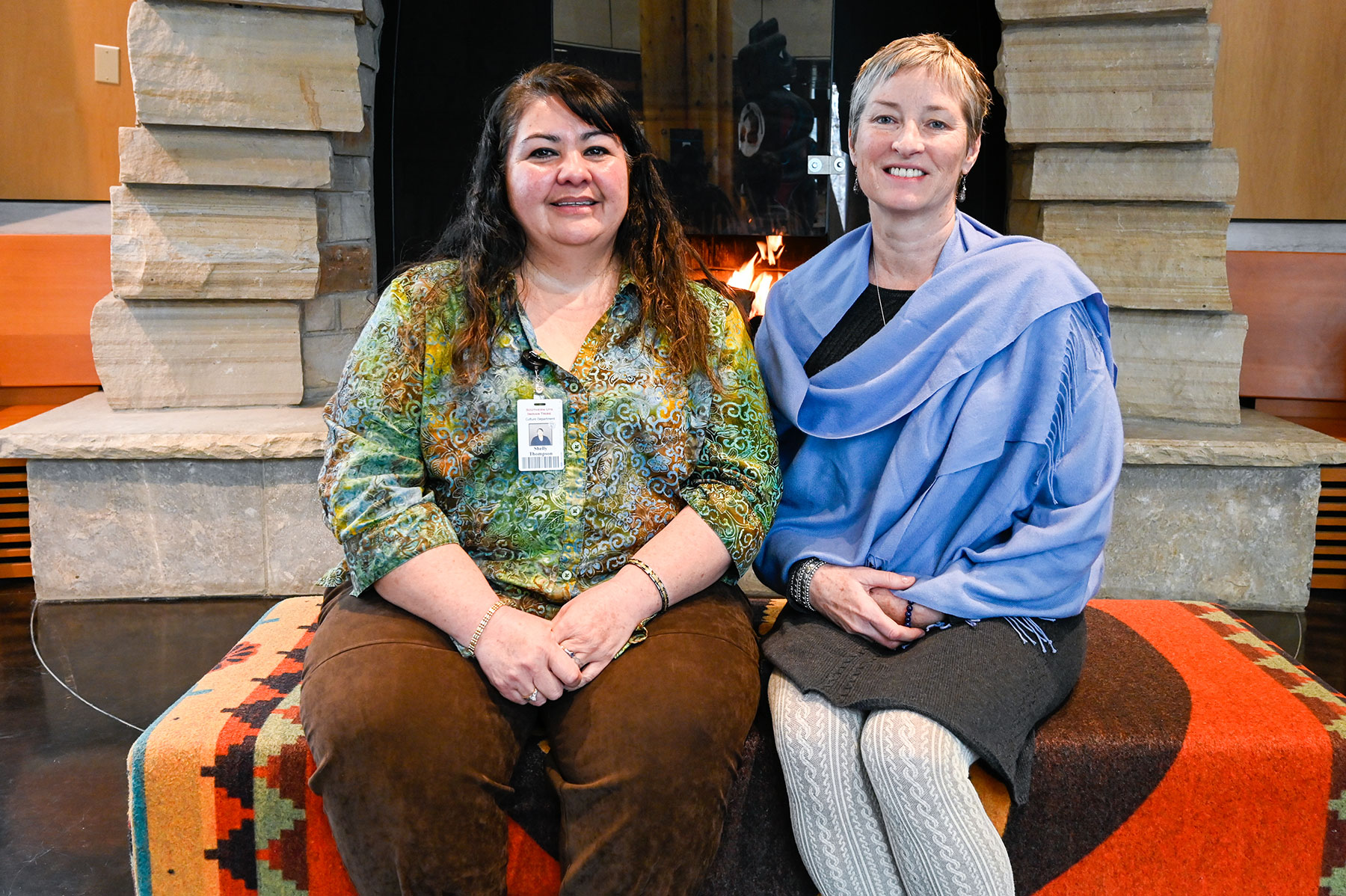The Southern Ute Cultural Center (SUCC) and the Southern Ute Museum (SUM) have recently hired new leadership. Southern Ute tribal member Shelly Thompson has taken over as the Cultural Preservation Director and Susan Cimburek as the new Museum Director.
Both parties have shared their excitement to be working alongside one another and to be sharing the facility.
Thompson has a long history of work experience with the tribe. She started working as a youth employee when she was 14 years old. She’s spent time in various departments since then, but her favorite position was a Community Health Representative (CHR) and Administrative Assistant. “I look back and always feel grateful to have been able to work with the elders,” Thompson reminisced. “I loved being around them especially when they would share their stories, it allowed me to really connect with them.”
In addition to her work history, she has a strong education background. After graduating from Ignacio High School, she pursued an Associate’s of Science degree from Pueblo Community College (PCC) majoring in Criminal Justice with an emphasis on Adult and Juvenile corrections. Moving from PCC Thompson attended Fort Lewis College in Durango, Colo. and obtained her Bachelor of Political Science degree. She then moved to Denver where she worked and attended school at the University of Denver before receiving a Master of Social Work Degree. Deciding to stick around the Denver area, she returned to school at the Sturm College of Law at the University of Denver to complete the program and now holds a Juris Doctor degree.
“I know my law degree can be put to work in this department, especially through the Native American Graves Protection and Repatriation Act (NAGPRA) program,” stated Thompson. “Not only do I want to see the department grow, I want to help my employees grow.”
The Native American Graves Protection and Repatriation Act currently helps Native American tribes regain ownership of cultural items that have been discovered or excavated on federal lands. The act also protects the disposition and repatriation of cultural and sacred objects. In addition to the NAGPRA team, Thompson will oversee special events, culture education, traditional events and five culture committees. Special events such as heritage dances, holiday dinners, youth camp, Bear Dance and Sun Dance will continue as normal. “I want to see more classes being held here [at SUCC] different from the ones that have been held recently,” Thompson expressed. Future classes may include cradle board construction, breast plate making, shawl work as well as beading demonstrations.
“I love working here, I’ve been going a hundred miles an hour trying to get staff input and making plans so my department can shine,” Thompson stated. “We are busy, but we are always open to new ideas and want to see the membership in our offices.”
The Culture Department is located on the second floor of the Southern Ute Museum building and it is one of Thompson’s goals to make the department more involved in the community and to ensure that there is always a presence of culture.
“Our language and culture are what makes us Ute,” Thompson shared. “We want to bring people back together, to themselves, and to the culture.”
Susan Cimburek — the Tribe’s new Museum Director, has always had a love of the Southwest. She grew up in the Denver area and has spent the past 30 years in Washington D.C. raising her family. Moving back to the Southwest last year she immediately was drawn to the culture and education of the Southern Ute Indian Tribe.
After years of studying and working in the busy city, Cimburek shared that returning to the mountainous area has been something she’s thrilled about. She currently holds two Master’s degrees; one that is being put to use in her new position is the American and New England Studies degree that she obtained from the University of Maine with a concentration in Museum Studies. With this level of education, it was no wonder that she ended up at the Smithsonian National Museum of American History where she worked behind the scenes in the archives and records department. She also spent many years as a High School social studies teacher where her passion for history, literature and education was shared with her students.
“I’m looking forward to sharing this space and working with the membership here,” Cimburek stated. “The building is beautiful and is really state-of-the-art, not only the exhibits, but the facility behind them as well.”
The museum has always had a mission that “strives to ensure the survival of Southern Ute people through meaningful education, cultural, historic and current event exhibits, and to provide a unique museum experience for indigenous and non-indigenous visitors.” The building is not only a resource for Southwest culture, but it is unique to the regional. The building was designed to incorporate the landscape to represent a connection to the land and it utilizes cultural symbolism throughout the building to showcase the beauty of the Ute people.
“There’s space in here for everyone, the community as well as departments are always welcome to host educational events,” Cimburek encouraged. “We want to host events that help people learn about history, art and heritage.”
The museum currently has eight employees, many of which are temporary workers through the TEAM and TERO programs. “Right now my priorities are to become fully staffed again and to have our new exhibits open to the public by Memorial Day,” Cimburek expressed. “We want young people to get in here too; all Youth Employment workers, students looking for internships and even school collaborations can accomplish this.”
As the museum transitions, Cimburek stated that she truly appreciates the warm welcome to the community and for the support from tribal departments that she has met with already. “I am here to support and create a pipeline to replace myself, I recognize the importance of having a tribal member in my position one day—until then I will stay committed to honoring and protecting the Southern Ute history and culture.”
The museum is open daily from 10am to 5pm and is located at 503 Ouray Drive in Ignacio, Colo. Everyone is welcomed to view the self-guided gallery spaces and visit with the museum staff. Admission is free of charge.

